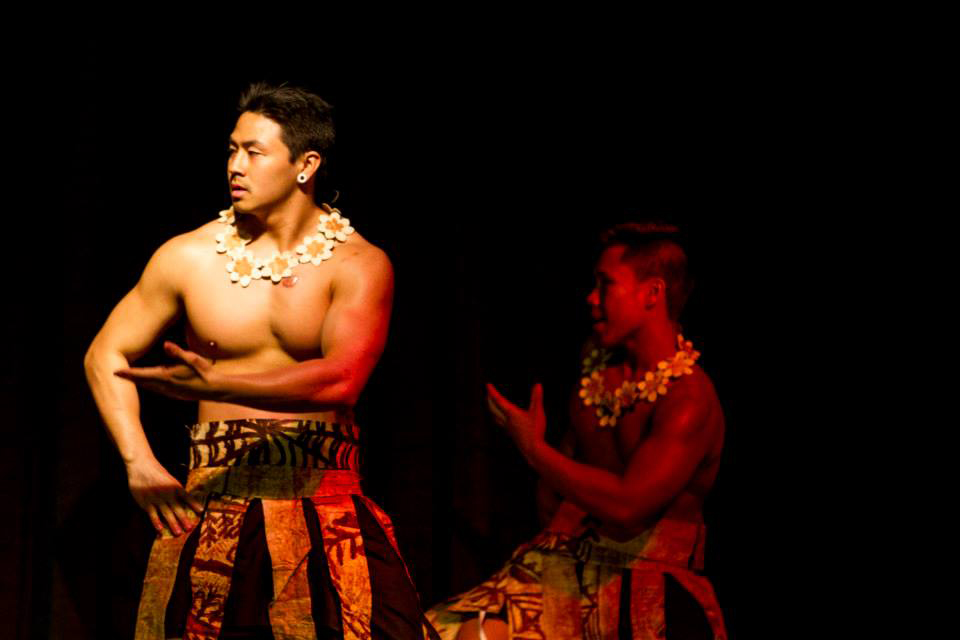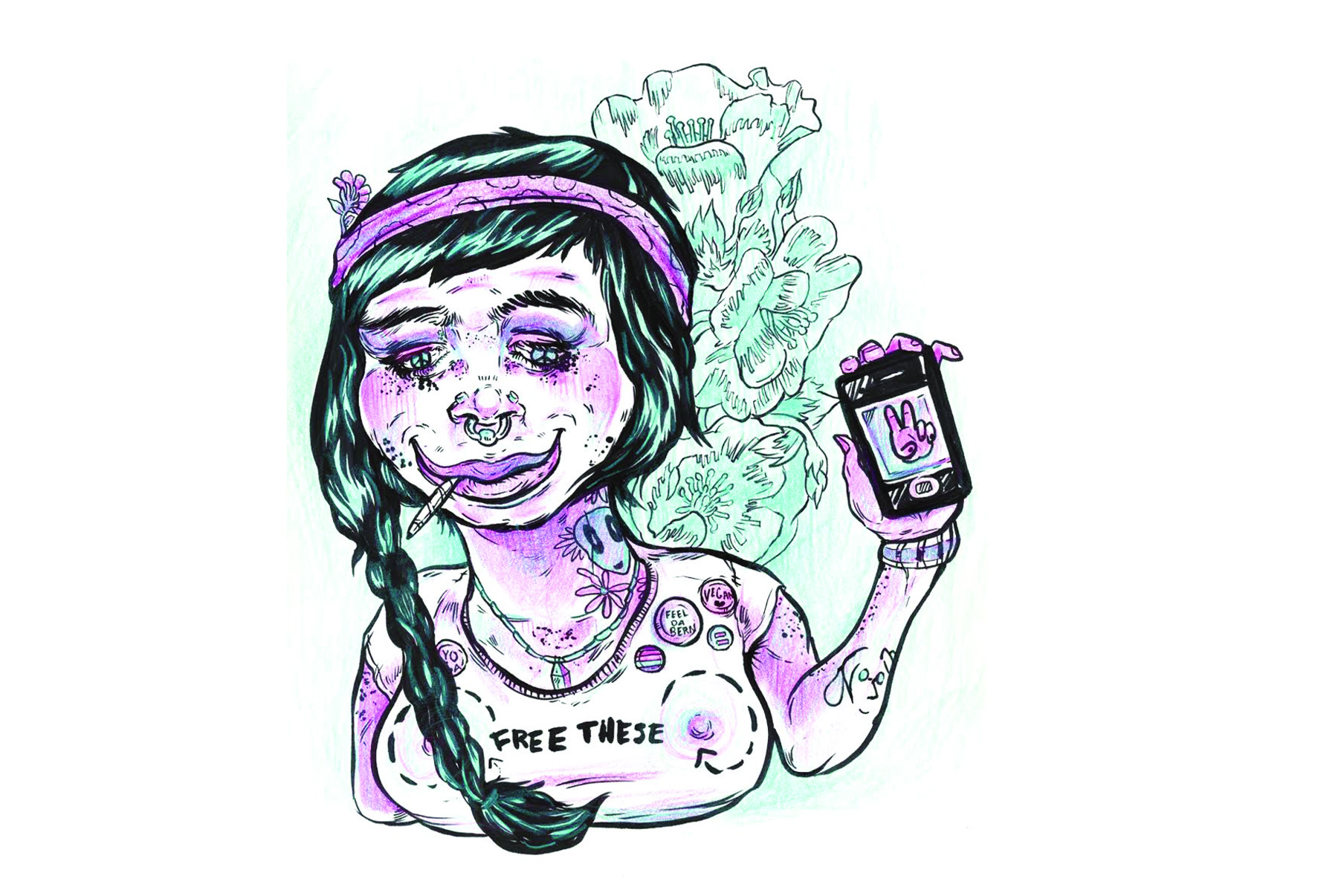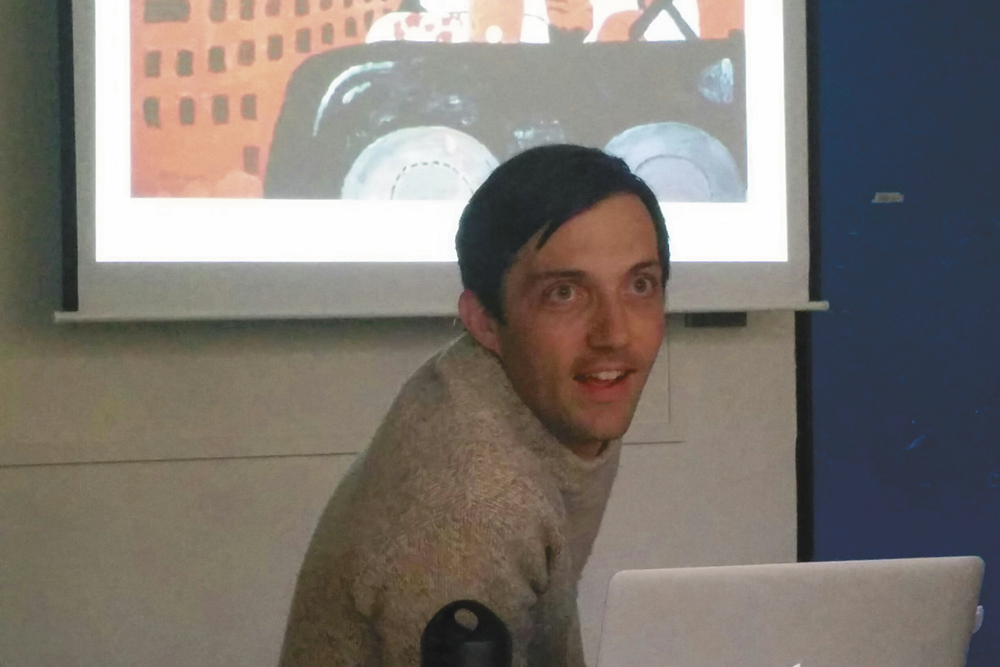Ink Visible is more than just a graduate project for Arianna Warner; it’s also a personal endeavor to illuminate invisible disabilities through tattoo culture. Warner is pursuing a Master of Fine Arts in Art and Social Practice at Portland State.
“This project is really about each person being able to self-identify and self-express their personal experience,” Warner said.
She believes that people often generalize about disabilities and illness in ways that aren’t true for everybody. For example, the notion that those who suffer from depression are visibly sad isn’t accurate. Those who may appear to be happy can also experience intense feelings of depression. Ink Visible expands our notions of what the word disability entails, beyond physical, visual or aural impairment.
“It’s really about the individual experience and it’s coming from that individual, which I think is really important,” Warner said. “Rather than someone else portraying their perspective on how someone lives.”
The idea for Ink Visible started about a year ago. Warner was working on another project that stemmed from her frustrations with the assumptions others made about her. Warner looks like what many consider a typical, able-bodied 26 year old, but she too has an invisible disability, a rare disease called reflex sympathetic dystrophy syndrome, that makes walking painful. That’s why, for example, she parks her car in disability parking spots.
“I’ve gotten cursed out by both people with disabilities and people who do not appear to me to have a disability,” Warner said. “It’s really unfortunate that people make those quick judgements about me and my body.”
That project was called Temporary Visible Disability (Tattoo). She printed out temporary tattoos that said “invisible disability” with a picture of the recognizable access symbol, but without the chair. She handed them out and also covered her body with access symbols, walking around that way for two weeks.
As she moved and the symbols gradually fell away, her disability became invisible again. It was a performance piece and a conversation starter. When she gave someone one of the tattoos, it acted as a pledge for them to discuss invisible disabilities with anyone who asked.
This made her think about how tattoos can be used to tell stories, reclaim identity and start conversations about different topics. Warner is fascinated by the permanent and decorative nature of tattoos and their ability to tell stories.
While tattoos may not be out of the ordinary in a city like Portland, in many places it’s still looked down upon and the culture is marginalized. She sees parallels with the disability community.
“It’s this thing people don’t really like to talk about,” Warner said. “A misfit of culture. So I think it’s fun to have these two different cultures intersect for the project. It seemed like such a natural thing.”
Warner collaborated with five Portland tattoo artists who identify as having an invisible disability, which they’ve represented by designing their own tattoos. Even though people may share the same diagnosed disability, everyone experiences it differently, so it has been exciting for Warner to see how these artists have represented those experiences visually.
“Just because something is not apparent to the outside world, doesn’t mean we all don’t have challenges we face everyday, that affect our daily lives and work—and the adjustments we have to make to be able to function ‘normally,’” said Tanya Magdalena of Above the Pearl Tattoo. She suffers from bruxism, a condition in which one grinds, gnashes or clenches their teeth.
Working with the artists and seeing their reactions as others took interest in their stories has been one of the most rewarding parts of this project for Warner. “It was exciting to see them and be like, ‘Oh I get to make a tattoo for myself,’” Warner said. “And share a side that they weren’t typically talking about in their everyday.”
Lindsay Carter, a tattoo artist from Opal Ink, said this project has finally given her the courage to talk about mental illness. She has been living with depersonalization and derealization for the last eight years, and only received a proper diagnosis and assistance in recovery in the last month.
“My initial goal was/is to support and help others see it’s okay to identify/accept, and empower them to speak up and express,” Carter said. “With that goal in mind I had no idea I would be greatly rewarded too; I needed this project to help me grow and feel comfortable within my very own seemingly invisible situation.”
The project has also had a profound effect on Aubrey Hight, an artist from Hawthorne Ink. It’s been especially challenging for her because she has social anxiety. She hopes the project will make people realize that just because someone doesn’t look disabled or ill, doesn’t mean they are not suffering.
“I think visibility is incredibly important for mental illness because the repercussions can be huge when people with mental illness remain silent,” Hight said. “And providing younger people with the idea that, ‘Hey! This person is also dealing with illness, and they are able to live a relatively fulfilling life’ is super important as I didn’t have that growing up.”
Nadine Edwards is an intern for the project through her women’s studies practicum course. She was excited about the project because (dis)ability and access are often not discussed in the classroom. But she said the implications of this topic are often difficult to face.
“The most challenging aspect of this project is hearing the different stories and realizing that they share a similar theme: Society has failed them in one way or another because of their disability,” Edwards said. “These reasons range from not being able to receive proper or equal healthcare, losing trust in the medical system which results in self-management of illnesses, or from experiencing daily micro/macro-aggressions from friends, neighbors and strangers.”
She hopes the project will stimulate the necessary conversation to address these problems and end the systemic oppression of people with all disabilities—visible and invisible.
On May 13, the project really came to life when Warner printed and distributed the artists’ temporary tattoos at the Lucky Lab Beer Hall, along with pages that told each person’s story and how the tattoo represented their experience.
Hight’s tattoo was that of a woman’s face with detached eyes and stars shooting out where the top of her head should be, symbolizing the space and loneliness that accompanies mental illness; Magdalena’s was of a tooth with a red lightning bolt and a banner that read “bruxism”; Carter’s was of a bird with a cage instead of a head and a disembodied eye ball, representing how her mind is like a cage.
But the artists weren’t the only ones encouraged to tell their stories. Warner distributed blank pages where anyone could tell their story, design their own tattoo, print it, and apply it to their skin. And they did. The tables were full of people drawing and coloring and talking. Conversation filled the space.
Kevin Jesuino, a visitor from Calgary in Alberta, Canada, and Zachary Neumann, a PSU student, were two attendees pulled into dialogue through the project. “We met at the printer, and now we’re talking about social justice issues,” Jesuino said. “It’s not just the art. The art is the catalyst. With social and creative capital we can change the issues of the world right now. That’s where innovation begins.”
“It’s using art as a form of communication to change things and bring about awareness. Super cool,” Neumann said.
Jasmine Stein and Melissa Cramer are two seniors at PSU working on a project about invisible disabilities in the Child and Family Studies program. They said the third member of their group is deaf and she initially got them excited about the topic, so they decided to attend the event.
“I personally just don’t have any experience with it at all,” Cramer said. “The term ‘invisible disability’ was new to me. It was great to take it upon myself to learn about it.”
Stein said tattoos were an effective way to start conversation because they naturally invite one to ask about its story. “I love that she’s introduced tattoos as a way to bring awareness because I think that’s a creative idea and it’s easy to talk about,” Stein said. “It’s a really good icebreaker. It’s easy to create conversation.”
Harrell Fletcher, an Art and Social Practice professor and faculty advisor for the project, was also present and lauded Warner’s hard work. “I felt solid she would pull off a great project,” Fletcher said. He helped her refine her ideas and develop it as a pilot that can lead to future work.
Judging by the enthusiastic, engaged participants that night, it seems like Ink Visible may just be getting started. Warner hopes to continue her efforts and replicate this project in other cities around the country.
“There’s so much more we could be doing about it,” Warner said. “The first step is letting people know we’re here.”
Paige Buda is the graphic designer for the project. She has enjoyed working with Warner and felt like she treated her as a partner. She said she’s also learned a lot about a community she otherwise would not have.
“I hope it will create a greater awareness and understanding of the community. Ink Visible promotes approaching people with kindness, understanding and patience, because someone’s disability can be invisible to your perception,” Buda said.
Warner has loved hearing people’s reactions. The project was on K2 News and within two hours she received an email from someone whose father has the same disease as Warner. She told Warner that he was so touched by the project and proud of her for her advocacy work. This is just one of many emails and stories that people have shared with Warner.
“This is what the project is supposed to be doing. This is what is bringing all this work full circle,” Warner said. “I’m getting to learn so much about other people’s experiences and I’ve been so privileged to be able to share mine. It’s really exciting to provide that space.”







I saw your article on Facebook and felt I should make contact with you. I’ve been living with RSD since 1980. I used to have an invisible handicap, but as I require crutches to get around now, it’s visible. The syndrome is a real bear; my visible issues come from spinal problems developed from limping around for many years. To make a long story short, you’ve got a great idea. I wish I’d had some support 20 or 30 years ago! For me, the best help has been swimming. The crutches have led to some interesting comments, but just being mobile in the pool 4 times a week makes up for the worst! Best of luck to you.